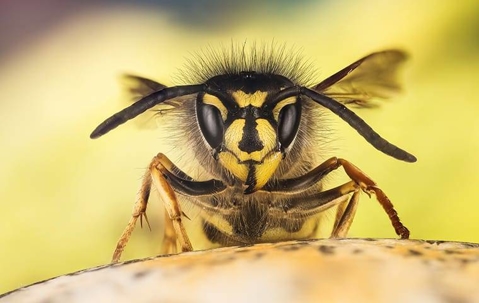Common Wasps In The Area
Wasps are a family of insects that all share similar traits. They all fly and have stingers, and most of them utilize hive behaviors to build their nests and repopulate in large numbers. However, some wasps are more aggressive than others, just as some can cause larger property issues. Here are some of the most common to watch for:
- Pollinator bees: The two main species are honeybees and bumblebees, both of which have furry bodies that are perfect for picking up pollen from plants.
- Carpenter bees: While they are technically pollinators themselves, carpenter bees have a unique trait. They bore into wooden items to make tunnels for their eggs, so they can cause serious damage over time.
- Yellowjackets: This is probably the insect that comes to your mind when you think of a wasp since we tend to think of bees as separate from the category. Yellowjackets lack the fuzzy features of bees and can sting repeatedly.
What Attracts Them To Yards
All kinds of wasps can potentially be dangerous, even those that aren’t as aggressive as others. They all have venom in their stingers, which some people can be deathly allergic to. For the sake of any sensitive houseguests, it’s important to recognize what attracts wasps to yards in the first place. Here are some of the major factors:
- Sugars: Aside from the pollinating plants that they feed on, wasps are attracted by sugary aromas whether they are produced by garden pests like aphids or that are the result of food waste left out. Discarded soda cans are a frequent culprit.
- Moisture: While insects are often attracted by sugary aromas, they are also attracted to moisture. Standing water in your yard, or areas where shade allows dew to hang around all morning, will attract pests, too.
- Pests: Not all wasps exclusively eat pollen. Some hunt other insects, so the presence of existing pest populations on your property will attract other pests.
How To Prevent Wasp Nests
Now that you know what attracts them, you can get started on the general steps to take around your property to help reduce those factors. All of the following are important for making your property less attractive to wasps:
- Landscaping: Keeping trees and hedges trimmed back will reduce the area that wasps have to make their nests in your yard.
- Trash storage: Making sure you don’t leave soiled food containers lying around, or lids to your trash bins open, will reduce the aromas that might attract pests.
- Treatments: The surest way to ward off all kinds of yard pests is with treatments applied by professionals. Expert treatments can not only eliminate existing nests, they can prevent future outbreaks.
Don’t Remove Nests Yourself: Call The Pros!
Even for those who aren’t allergic, wasp stings are unpleasant and can be dangerous in large quantities. That’s why no one should try to remove a nest from their yard. Instead, contact professionals who can get in there and remove pests quickly and safely. At Aerex Pest Control, we can not only help remove existing problems, our lawn treatments offer the best overall protection from pests that money can buy. Since general pest control is crucial to keeping other pests from being attracted to your property, it’s better to enlist the help of experts long before problems present themselves. Let us get you scheduled for an inspection today, so we can judge your level of risk to wasps or other pests.
To keep wasps from buzzing through your community, trust Aerex Pest Control for assistance.

